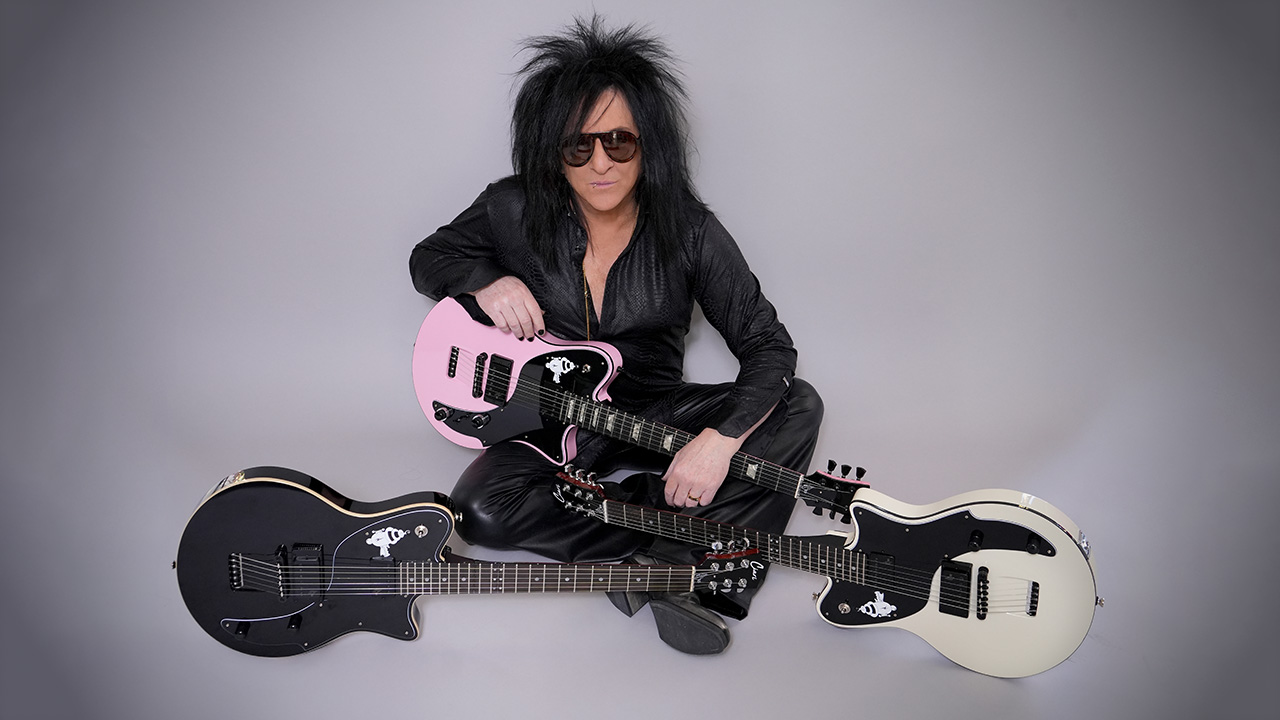“Arguably the most convenient, immersive Spark product to date”: I've been using Positive Grid's Spark Neo guitar amp headphones for weeks – and while it's not the full Spark experience, it's got me playing guitar a lot more regularly
Guitar-specific headphones meet a wireless transmitter, and it's all tied together with Positive Grid's Spark app functionality. But, this isn't the full Spark picture you might be used to
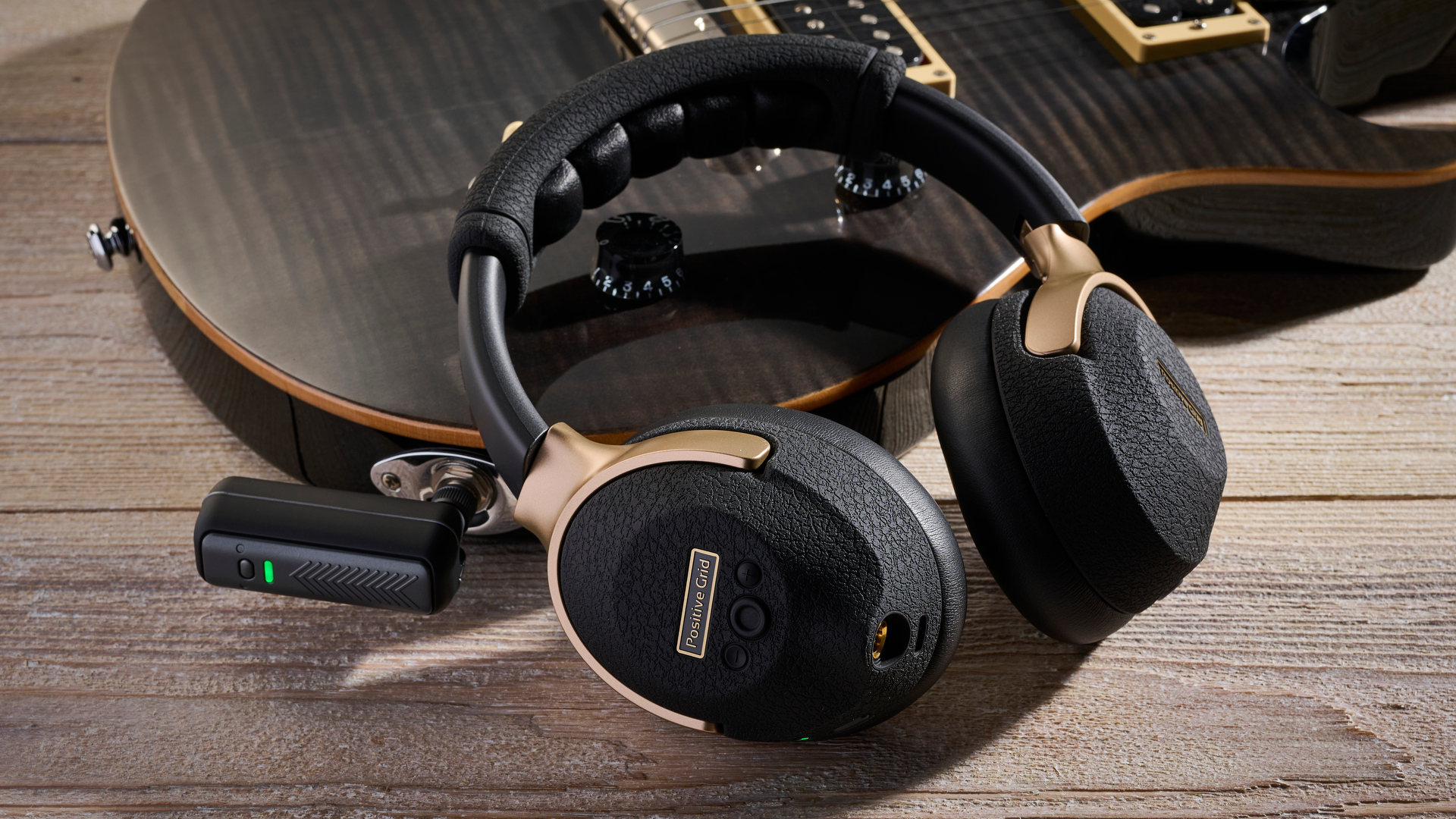
Price: $199/£189
Frequency range: 20Hz – 20kHz
Headphone sensitivity: 100dB SPL (@ 1kHz)
Impedance: 32 ohms
Drivers: 40mm ABF Diaphragm
Wireless range: 5 meters
Playtime: Up to 8 hours
Buy from: Positive Grid
Positive Grid has kicked off 2025 with the introduction of the Spark Neo: a dedicated, headphone amp practice setup priced at $199 that comprises headphones, a 2.4GHz wireless transmitter and, of course, its Spark app for iOS and Android, which is home to amp and effects modeling and a host of other features that – applied to Positive Grid’s existing range of amps – have seen it take the ‘smart amp’ market by storm over the last few years.
Boasting 100 percent wireless connectivity, the Spark Neo offers up to six hours of playing time from a single charge. Via the Spark app, there’s access to 33 amp models and 43 effects, thousands of tone presets (with the ability to store four in the hardware for use away from the app), smart jamming features and more, giving this setup the potential to be an uncluttered, take-anywhere rig.
If you aren’t familiar with Positive Grid’s Spark products, it’s a fairly straightforward, yet clever concept. So far, PG has released four core Spark hardware practice amps: Spark 40, Spark 2, Spark Mini and Spark Go. Each of these is built around the same platform of the free Spark app, which is loaded onto your mobile device (iOS, iPad iOS and Android) and connects wirelessly to the PG hardware.
From here, you can access a number of features you’d probably expect such as amp and effects modeling and preset management. But the Spark app also contains a host of practice tools to make everything easier and more convenient.
There’s built-in streaming of copyright music and non-copyright backing tracks, it can harness the power of your device to film clips (including the processed guitar signal) for social media, and there’s access to over 100,000 tone presets via the ToneCloud section of the amp.
But, the icing on the Spark’s cake for many are its intelligent features, including Auto Chords, which automatically generates a chord chart from the music you’re streaming to make it easy to learn.
Smart Jam is a backing track generator, which analyses the incoming guitar signal and creates a backing track to fit both harmonically and stylistically, and finally there’s Spark AI. Here, you can prompt the Spark to create a tonal preset for you by feeding it phrases such as band and song names, or more descriptive, abstract demands if you don’t have a specific reference.
Get The Pick Newsletter
All the latest guitar news, interviews, lessons, reviews, deals and more, direct to your inbox!
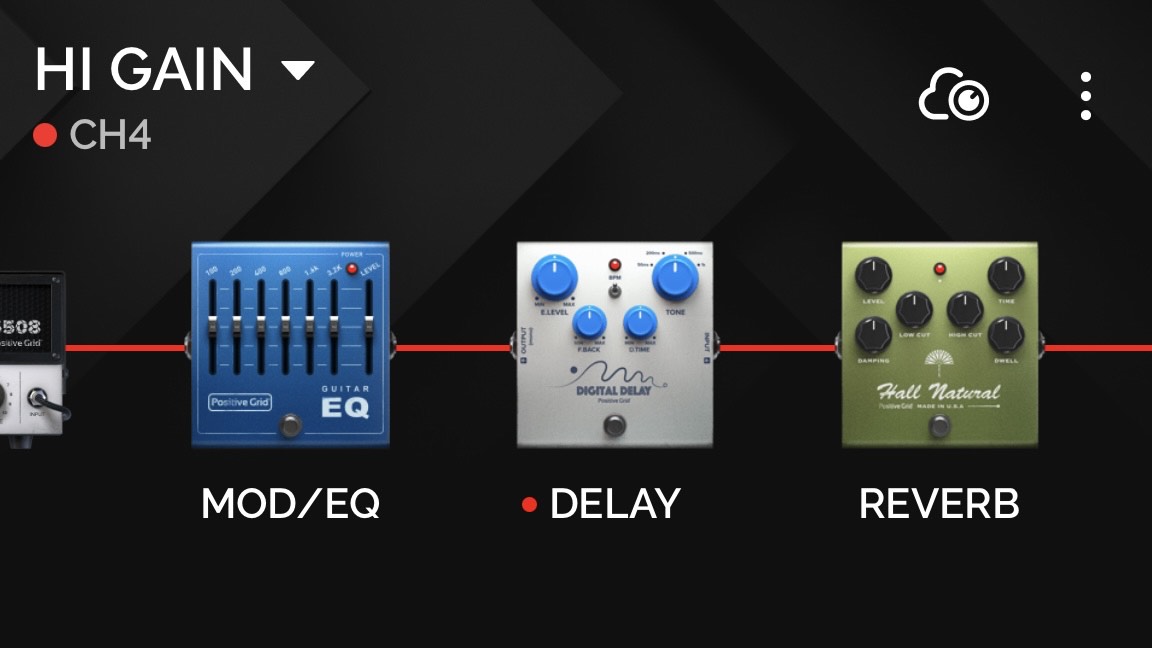
Confession time: when it comes to playing the guitar, I’m far from a traditionally schooled and practiced student. In fact, my abilities are a melting pot of bad habits and technique-gaps not-so-carefully honed over a couple of decades as a self-taught guitarist.
Mainly because when I’m playing the guitar for fun, I don’t really like getting too deep into the ‘homework’ side of things; I’d rather play along to songs or attempt to write a riff that I can then jam to than studiously practice techniques to a metronome.
I grew up in the era that many consider to be the last golden age of guitar music: the ’90s. This means I had a choice between attempting to learn seemingly unachievable guitar wizardry by ‘proper’ players, or take the fork in the rock road carved out by the likes of Messers Cobain, Gallagher, Armstrong and Frusciante. It’s safe to say I’m from the world of rhythm playing, where – when a solo does occur – histrionics are substituted for melody. The riff, to me, is mightier than the sweep.
So, when Positive Grid contacted me to tell me it was launching the Spark Neo Amp Headphones, I was, ahem, all ears. Could this be the Spark product that encourages me to become a more disciplined player?
Positive Grid Spark Neo: What is it?
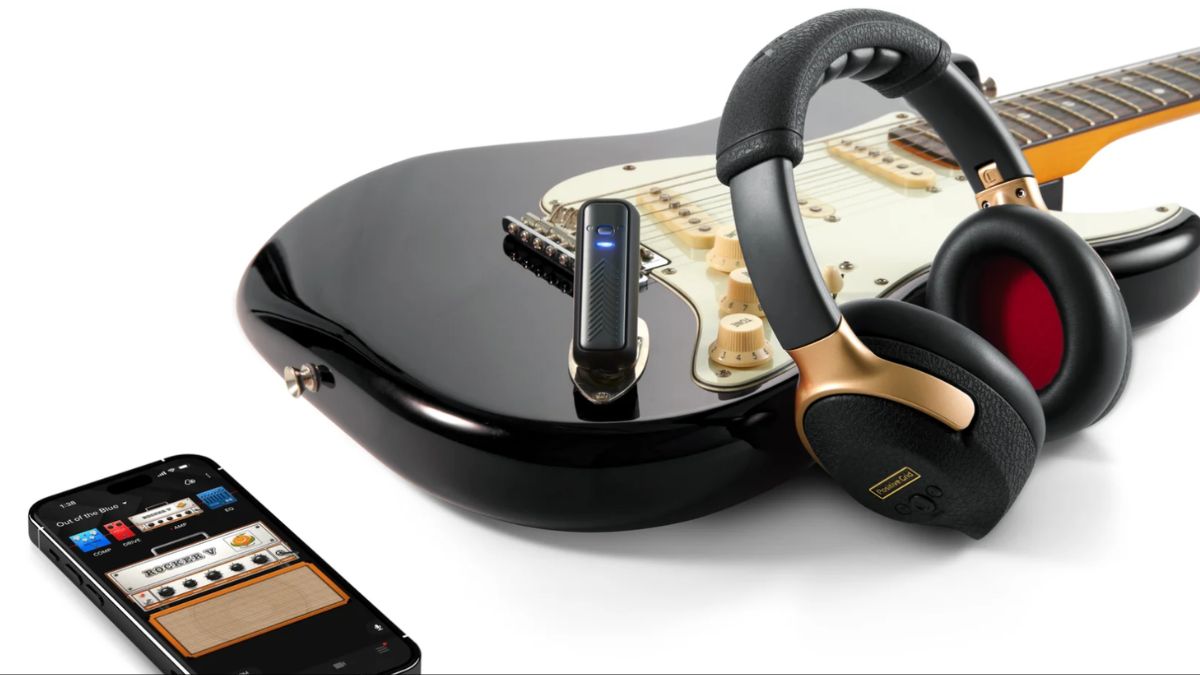
The Spark Neo headphones are the centerpiece, equipped with Bluetooth and a receiver for the transmitter, culminating in a 100 percent wireless practice solution. Naturally, they can also function as regular Bluetooth headphones, so you can use them for everyday listening - but there’s no mic, so don’t expect to use them for phone calls.
They’re loaded with 40mm drivers, and Positive Grid has tuned, vented and dampened the Neo headphones to respond specifically to guitar-playing.
On the outside, there are five buttons offering power, Bluetooth and wireless pairing, volume up/down and preset select. The latter gives access to the four customizable presets stored within the headphones, so, if you don’t want to connect to the app, you can populate the headphones with your four favorite sounds and recall them at any time.
Similarly, there’s a quarter-inch jack socket on the right ear cup. This allows you to connect your guitar old-school style if you don’t have the transmitter charged or with you.
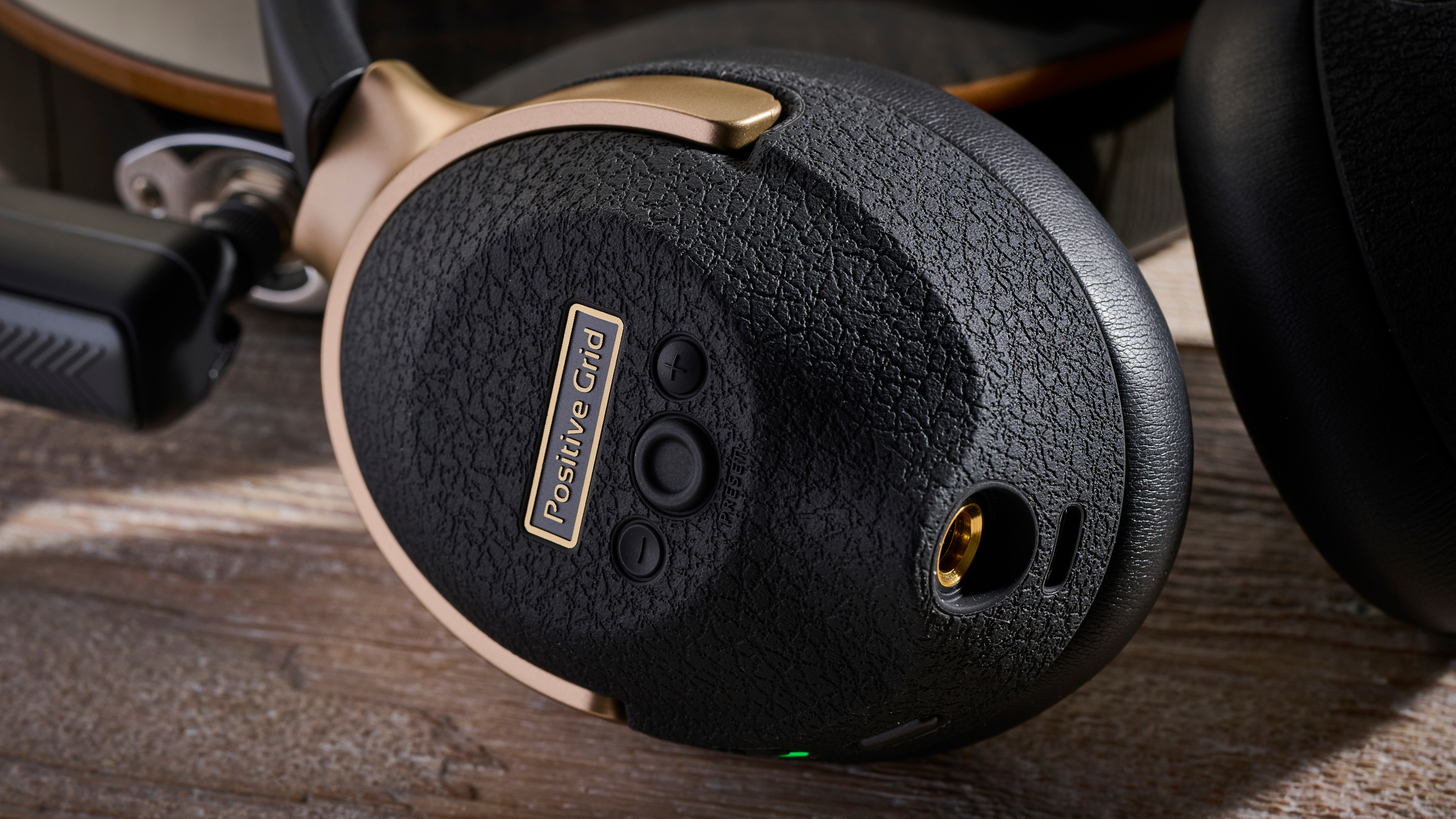
The wireless transmitter closely resembles Positive Grid’s Spark LINK wireless system, however, as well as the color change, it’s important to point out that this is not ‘one half of a Spark LINK system’. The transmitter supplied with the Neo operates on a reduced range of 3-5m, and is not compatible within a LINK setup.
Finally, there’s the Spark app. Positive Grid only makes one version of the app per-platform, designed to work across all of its Spark products. So, end users will find it in their device’s app store, and if you already have it downloaded to your device, a simple update will expand its compatibility to work with the Neo. There are, however, a few concessions when it comes to app functionality with the Neo, which I’ll get into later.
I was sent the Neo a few weeks ahead of launch, giving me plenty of time to get used to them. Here are some of the things I like best, and a couple that I don’t.
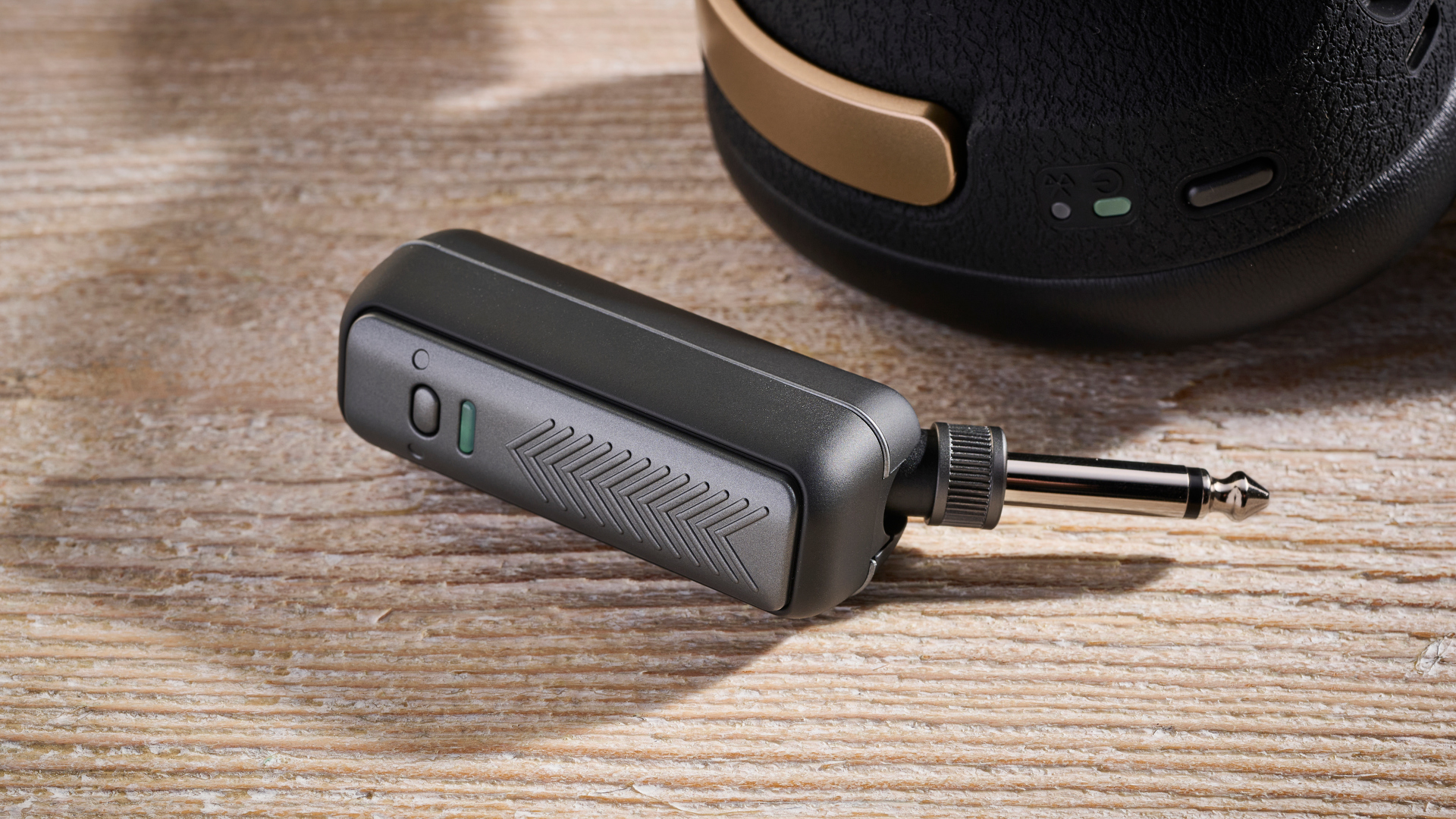
For: Spark Neo is perfect for portable practice
I’ve been reviewing guitar gear for almost 20 years, and previous to that I worked in musical instrument retail. One of the biggest changes I’ve seen over that time is manufacturers' seeming desire to make every product do everything. Good value? Probably. But at the risk of having many products that are a jack-of-all-trades without specializing in any.
The Neo definitely feels like the ideal dedicated, portable practice rig, at least for me. That’s because, unlike my amp, modeling multi-FX unit or even the computer-based plugins I use regularly, that’s exactly what it’s designed for.
Too often, I can find myself getting distracted with tweaking sounds or recording the idea I’ve just stumbled upon. The Spark Neo does a lot, but it’s all geared around keeping you doing what you sat down to do: play the guitar.
Yes, there are a lot of sounds at your fingertips, but the signal chain within each preset is fixed and organized, and while it certainly isn’t limited – there’s a lot of variation to hand when it comes to amp and effects modeling – I found myself not getting distracted in gear selection and instead, spending more time playing.
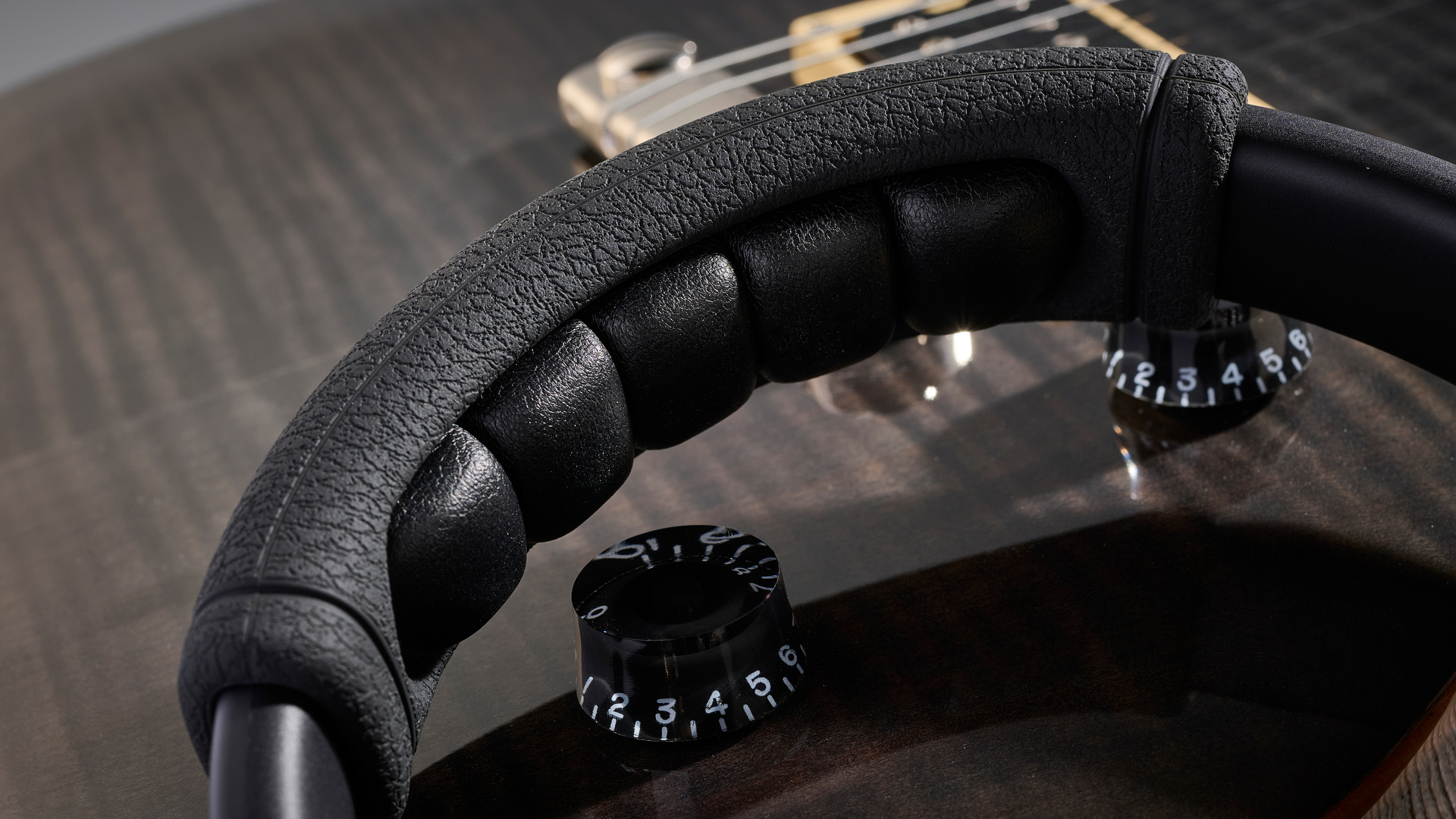
As well as this, due to the time of day that I most often grab the guitar, I regularly find myself playing with headphones anyway. With the Neo, it’s quick to plug the transmitter into the guitar, pair it to the headphones and then pair everything to the phone, all without the restrictions of cables.
Once you’re paired, there’s no indication that you’re playing without cables: no drop-outs, no distortion, and most importantly, no discernable latency. Of course, it comes with the added bonus that if I want (or need) to play in a different room, I don’t have to disconnect anything.
I can put my phone in my pocket – or abandon it entirely by storing presets, keep the headphones on my head or around my neck, pick up the guitar and continue playing, and as long as everything is pre-charged, you can use it anywhere.
Similarly, if your job requires you to stay away from home often, or you like to take regular weekend breaks but don’t want to be without your guitar, the Neo is likely to be one of the most convenient ways to make sure you can keep your hands in. The headphones and transmitter take up very little space, and charging them requires a simple USB-C cable.
It’s a dedicated practice tool, and during the time I reviewed the Neo, it succeeded in making me play more regularly, and for longer periods of time, too.
For: It sounds great, and not ‘just for the money’
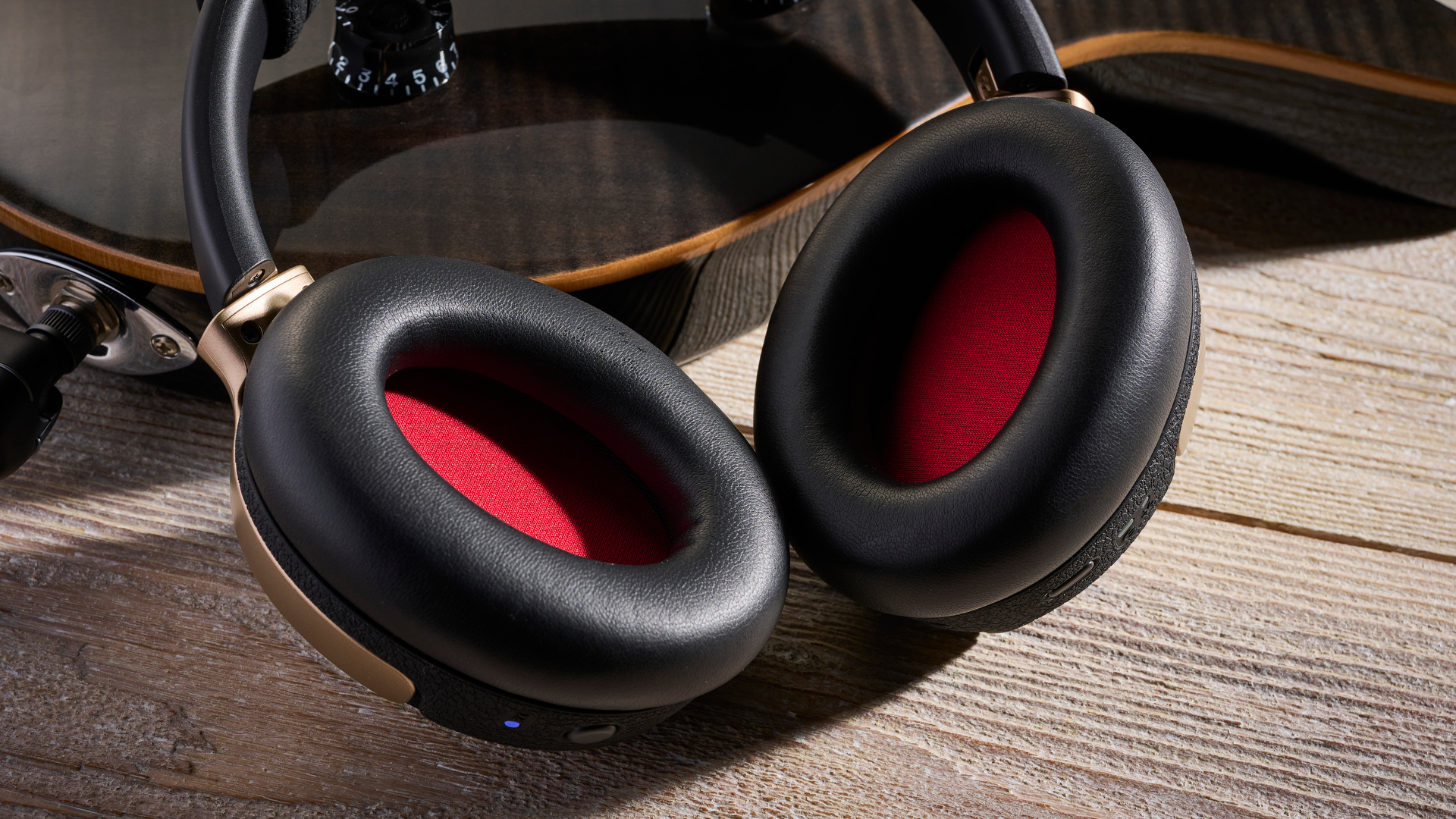
If you’ve used any of the Spark amps before then you’ll already know: the amp modeling and effects are, for the most part, brilliant. There are 33 amps and 43 effects for you to play with, and overall, it’s quite hard to believe that the sounds you’re playing through are coming from a comparatively affordable bit of hardware.
But they are, and as with so many app-based products, one of the big reasons the sounds are able to punch above the weight of the price tag is because the control and graphic side of the Spark is farmed out to your mobile device. This means there’s no need for expensive displays and hardware buttons are kept to a minimum, meaning more of the money you’re spending can go into R&D of the sound generation.
With that said, though, Positive Grid clearly seems to have thought about the design of the hardware, too. It says that the drivers within the Neo have been tuned specifically for the use they’re intended for (guitar and bass), and they do seem to complement the tones selected from the app.
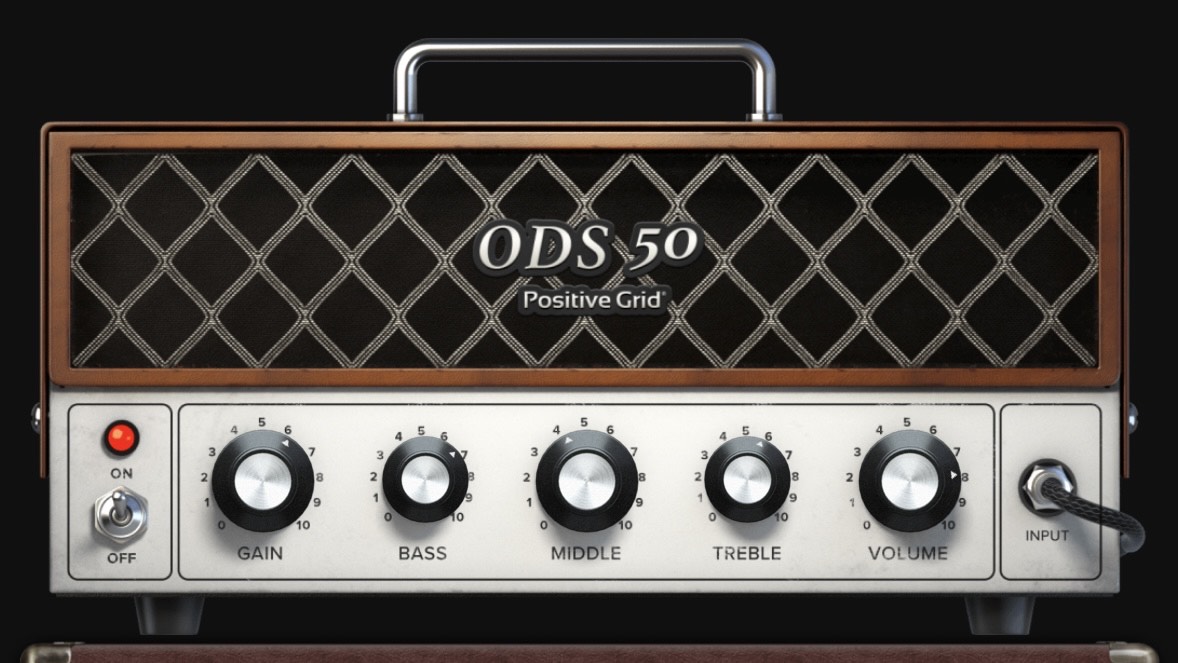
Talking of which, the first preset I opened on loading the app was the pre-made Crunch sound. This uses PG’s approximation of a Dumble ODS 50 as its cornerstone, and I was instantly surprised by how good it sounded. The amp felt as well as sounded like it was coming from a much more expensive unit.
But the same can be said for the entire menu – the delays sound analog where they’re supposed to, the modulations are rich and deep without the plastic jitter found in some affordable modellers, and the reverbs are lush and hi-fi.
There’s everything from vintage Marshall and Fender amps to high-gain modern classics from the likes of Mesa/Boogie and Soldano on offer. To me, the Spark’s amp models excel in the clean-crunchy territory, with a few (but not all) of the higher-gain sounds veering into fizzier territory.
Overall, you’re not going to struggle when it comes to tonal options. But even then you don’t have to worry about getting your hands dirty, as we’ll discover next.
For: It’s incredibly easy to find inspiring sounds
As I mentioned earlier, I like experimenting with different sounds. But not everyone does. If you fall into the latter category and all this talk of scrolling through different amp models makes you sigh, take another breath.
Positive Grid has loaded the Spark app with presets laid out by style – there are categories for Pop, Blues, Rock, Metal, Alternative, Bass, Acoustic and (while not applicable here), vocals. If you can’t find the sound you’re looking for amongst these, you can delve into the Positive Grid ToneCloud.
This is an ever-growing collection of user-generated Spark presets that’s quick to search with a song or band name, or generic terms such as ‘blues lead’, etc. You can audition them, then once you find a rig you like, download the preset to your phone.

“I can think of 100 products that do that already, though.” Correct, but I love the way Positive Grid’s app architecture makes this so fast. There’s no additional sign-up/sign-in, and each search result tells you how popular it is, so you don’t waste time on someone’s ‘best guess’ attempt at making a sound that matches your search. It all makes sense and doesn’t interrupt your playing experience for any longer than necessary.
But that’s not all. Positive Grid’s Spark AI functionality will make you a preset from scratch. You prompt it with a song, band, style or any kind of descriptive phrase you can think of, and in a few seconds it’ll present you with four options that it thinks fit the bill.
I was sceptical, so I tried a few different approaches – songs with tones I like, generic terms like ‘overdriven ‘80s rock rhythm’, and something a bit more vague (‘glassy soundtrack clean reverb and delay’).
Each time, it created example tones that really worked – I found that there were usually one or two standouts of the four options, but it’s great for those moments where an idea strikes and you want to hear what it would sound like through a specific type of sound.
Once again, you can select the sound(s) you like best and download them to your phone for recall whenever you like. It might be poised to steal our jobs, but here’s the proof that when AI is on your side it can be incredibly useful.
For: It’s immersive, and will keep you playing for hours

Throughout my time with the Spark Neo, there was one thing that stood out to me the most, and that’s how ‘immersive’ it is. A large part of this obviously comes down to the headphone-based nature of the product, but this isn’t the same as plugging in a pair of Beats or Airpods to your practice amp.
For a start, they’re just the right balance of weighty reassurance and comfort. At 360 grams, you know you’re wearing them, but only in the same way as a really nice pair of studio monitoring cans. The headbands are padded and the cups also sit comfortably without irritation.
More importantly, though, is the performance. Like the aforementioned monitor headphones, the Neos are fully closed, designed to keep your sound in and block external sound out. This is done purely passively (there’s no snazzy noise-cancelling tech at play here, just good ol’ fashioned physics), and it really does work.
With the headphones on, I feel like I’m in ‘guitar zone’, which again helps to keep the distractions down, and, if you’re at all self-conscious about your playing, will allow those 10,000 hours to pass a lot more comfortably.
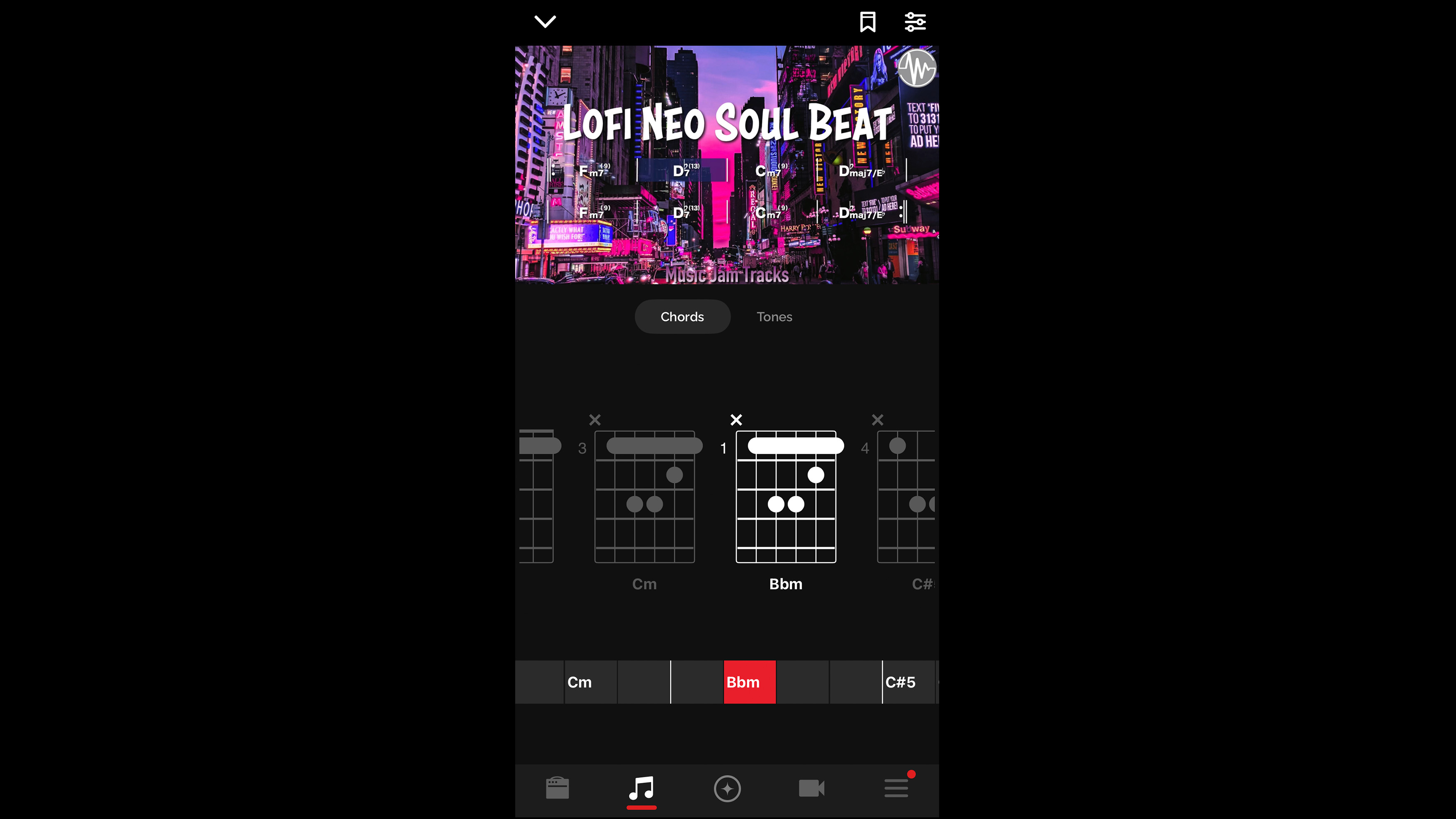
It’s not just immersive in the physical sense, though, because as well as the sound reproduction quality and preset creation keeping you inspired, there’s more interactivity built-in via the Auto Chords and Quick Jam features.
These hinge widely around streaming content from YouTube, and is the best implementation I’ve tried. In the Music section of the app, you’re presented with a curated list of tracks to jam with containing jam tracks in all kinds of styles: Jazzy lo-fi hip-hop to Thrash playalongs. In the search bar you can type in the name of a copyright song, and it’ll stream the original from YouTube, complete with a chord chart that it’s figured out for you.
But that’s just the start. At the time of writing, there’s no restriction on what the in-app YouTube player will access. So, you can type in the name of your favourite song followed by ‘backing track’, ‘no solo’ or ‘guitarless’ and if it exists on YouTube, you can play along with it.
There’s no fiddly re-routing of audio, no additional connections to be made; you just select a suitable sound from the tone presets, find your track and jam. It’s quite literally infinite hours of fun that couldn’t be easier to enjoy.
Against: It's not the complete Spark experience
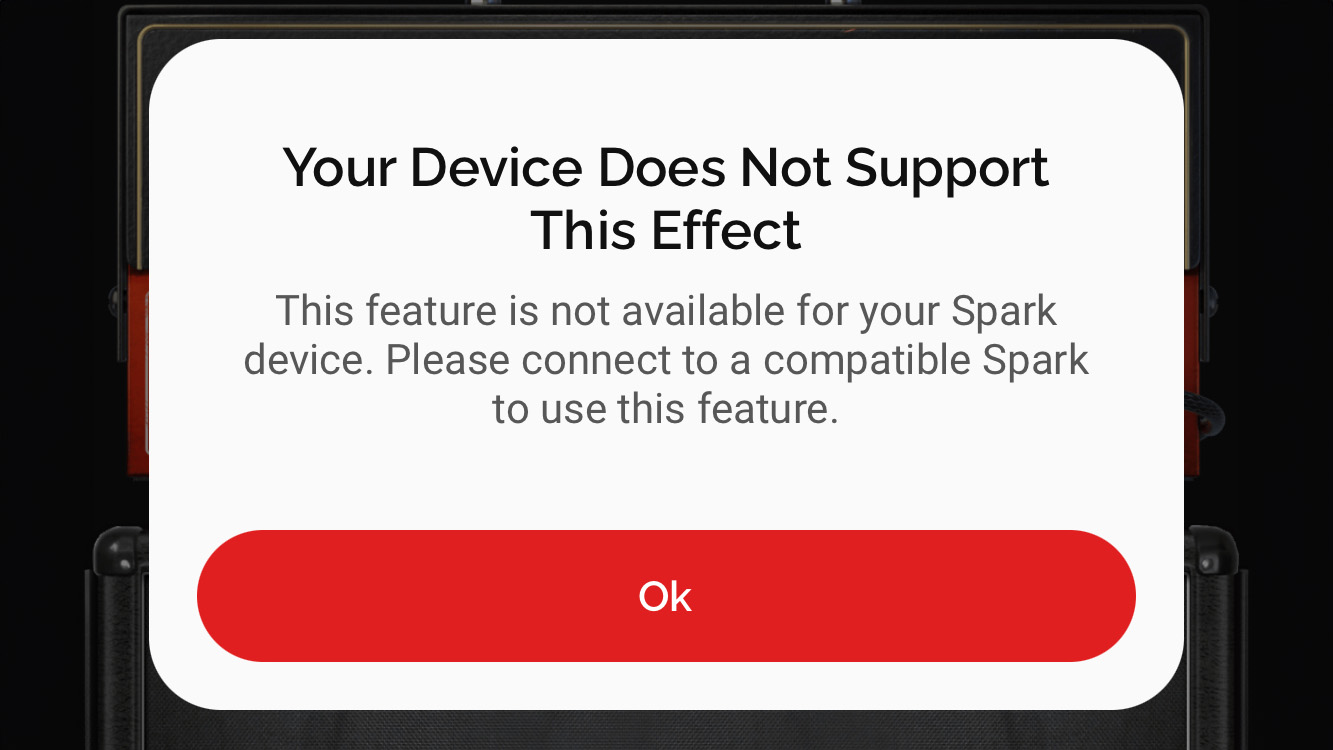
You might have noticed that so far, I haven’t mentioned Spark staples such as the Smart Jam, looper or in-app video capture. That’s because these functions, available on other Spark hardware, are not compatible with the Neo.
In my view, that’s a shame, because with such a practice-oriented product, it feels like these three ‘smart’ features could have made an already great product even better. In Positive Grid’s defence, there is access to a whole world of playalong content direct from the app, and I can live just fine without a looper.
At first, I wondered if the latter was left off the spec sheet due to having no viable way of starting and stopping a loop, but Positive Grid’s Spark Control and Spark Control X wireless footswitches are compatible with the Neo, so there’s no justification from that angle.
The Neo’s cable-free design should lend it to the video capture feature too, and given that the video capture is carried out entirely by the mobile device’s camera, it seems like a strange omission.
Whether or not the exclusion of these three features will stop you from buying them rests solely with you. Personally, it’s far from a deal-breaker, but it is something to be aware of if this is your first Spark purchase and you like the sound of those features, or alternatively, if you already own Spark products and are expecting them to be present on the Neo.
Against: No case at time of launch, and you’ll probably have to buy one
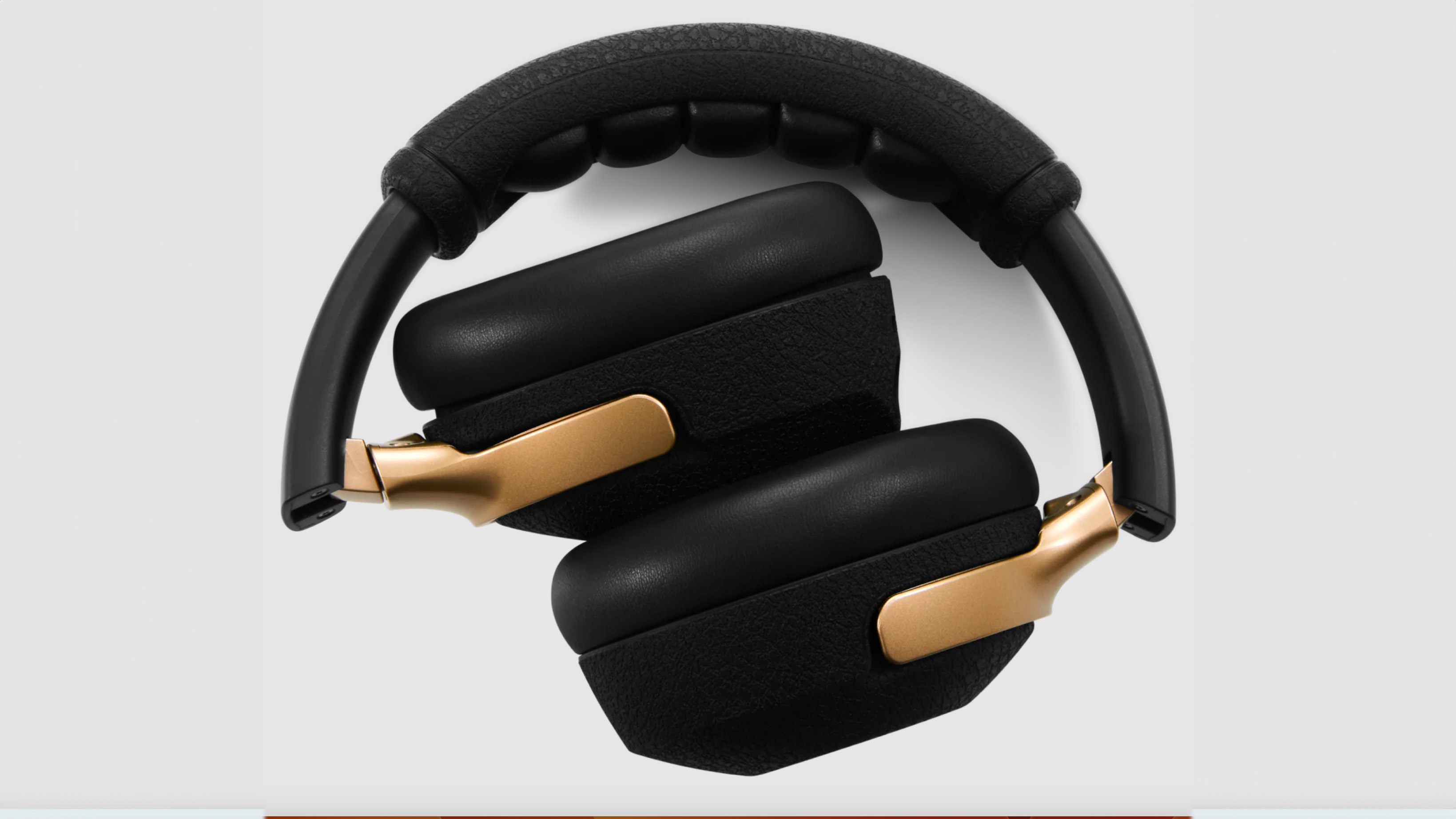
Given the convenience of the Spark Neo’s ‘play anywhere’ design, I think it would have been a great addition to have included some sort of provision for the times you might want to take the Neo on a trip away from the house.
Yes, the same could be said for other Spark products, but the Neo sees PG entering a slightly different market to amps, and it’s fair to say that it’s not uncommon for expensive headphones to come with a case.
Now, experience (along with a strong suggestion from the brand) tells me that Positive Grid will likely bring this out as an optional accessory, and I’d advise investing.
The Neo headphones are foldable, which makes fitting them in a bag easier, but doesn’t necessarily offer protection against damage. Then there’s the transmitter to consider.
It’ll rotate and fold, but leaving it in the jack socket of your guitar while you carry it around is asking for trouble. Not only could you damage the unit or your guitar’s socket and possibly the finish, you could easily press the power button by mistake.
On that note, there’s one more feature that I’d like to see added to the Neo system as a whole...
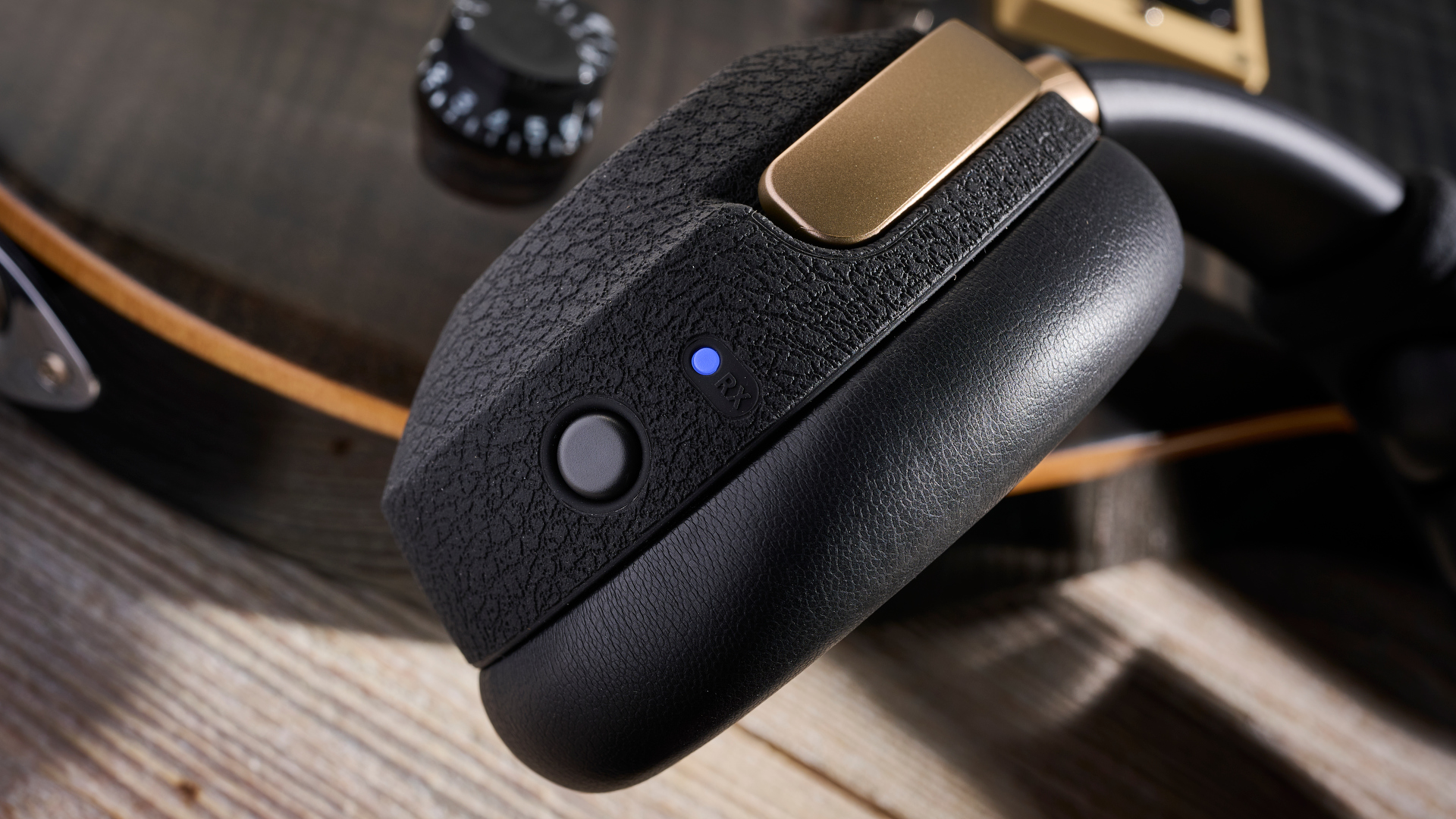
Verdict

There’s so much to love about the Spark Neo. No, it’s not the first product of its kind – the Boss Waza Air follows a very similar concept, but with a price tag that’s over one-third higher than Positive Grid’s take.
Similarly, the Fender Mustang Micro and the newly-reinstated Boss Katana:GO both offer stellar amp sounds from the convenience of a jack socket-mounted ‘mini-amp’. These two don’t cut out the cables completely, but they do offer app integration and control.
It’s the immediacy and cohesive nature of the Spark Neo that really captured my attention. I have access to multiple Spark products, as well as many of the others mentioned above, and I found myself coming back to the Neo over all of them.
There are gripes and niggles – but at no point did I find myself wishing for computer-generated backing tracks, looping, or the facility to film myself playing. You, however, might. Or, like me, you might find yourself focussing on using what is included in this iteration of the Spark rather than pondering the stuff that isn’t.
There’s a risk of the wireless convenience coming across like it’s solving a First World problem, and in a way, it is. But once you’ve experienced it, it makes complete sense. If the ability to grab your guitar and quickly start playing without cables sounds good (and trust me, it is), then you’re going to love the Spark Neo.
Couple that with the fact that the Neo is a similar price to a decent pair of ‘lifestyle’ headphones, and I think the value proposition is undeniable. The Positive Grid Spark Neo is arguably the most convenient, immersive Spark product to date.

Stuart has been working for guitar publications since 2008, beginning his career as Reviews Editor for Total Guitar before becoming Editor for six years. During this time, he and the team brought the magazine into the modern age with digital editions, a Youtube channel and the Apple chart-bothering Total Guitar Podcast. Stuart has also served as a freelance writer for Guitar World, Guitarist and MusicRadar reviewing hundreds of products spanning everything from acoustic guitars to valve amps, modelers and plugins. When not spouting his opinions on the best new gear, Stuart has been reminded on many occasions that the 'never meet your heroes' rule is entirely wrong, clocking-up interviews with the likes of Eddie Van Halen, Foo Fighters, Green Day and many, many more. If he's not playing the guitar, you'll likely find Stuart behind the kit playing Valerie to newlyweds.
You must confirm your public display name before commenting
Please logout and then login again, you will then be prompted to enter your display name.
“Retaining the tones that made it a game-changer from the start”: The Boss Katana:GO headphone amp is back after it was discontinued – but not as you remember it
“Precision-engineered sound and true wireless freedom”: Positive Grid turns the headphone amp market upside down with the wireless, AI-powered Spark Neo



